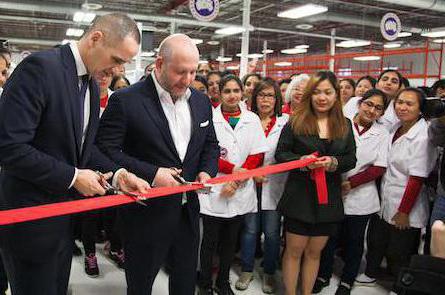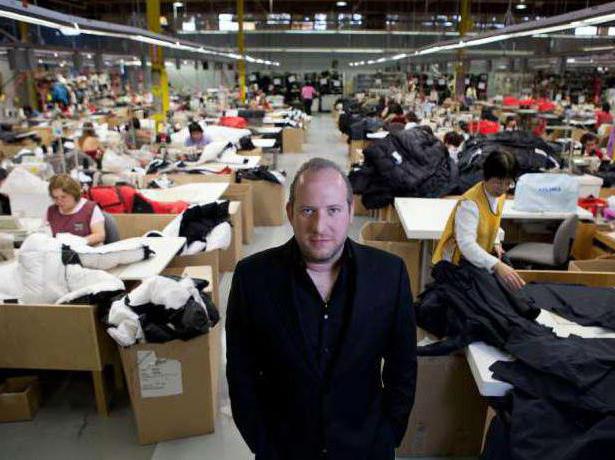Those costs incurred by the company for the acquisition of all components of production and their use, expressed in monetary terms, are the costs of the company. Types of costs can be determined by two approaches - accounting and economic, containing a different attitude to capital and its turnover.

Capital turnover
If the process of capital turnover that has already taken place is evaluated, this is an accounting approach. But a look into the future of the company on its development is economic. This means that the types of costs clearly distinguish between miscalculation of existing expenses as summing up the results of all activities that have developed over a certain period of time, that is, miscalculation of real costs and ways to optimize them for the future.
Both of these approaches in the activities of each company are simply necessary, since each of them carries its own load. The accounting and economic approaches have common goals aimed at the welfare of the company. Each of them (although its own cost function is considered) has a form, composition, and magnitude. All this should be objectively calculated using the analysis of various business items and prepared for inclusion in the overall business development scheme.
Past and future
AT accounting costs necessarily there are production items of expenses: material costs, depreciation of equipment, labor remuneration, insurance and so on. Economic types of costs reveal various options, following which the company can use its funds, and there is always a choice. You can invest them in production for profit, you can put in a bank at a profitable interest, or you can take a walk in Courchevel.
Of course, the same money is spent, that is, a certain amount, but with the same costs, the results will be completely different. Thus, the system of economic calculations reveals opportunity costs, and their types are determined as a result of choice. What is opportunity cost? This is the cash cost resulting from the summation of all items of expenditure. They are always associated with any missed opportunities.

Opportunity cost
The costs of missed opportunities are expressed at the price of the best available opportunity, this is the main guideline of all commercial activities. It is with him, bypassing the other types of costs, that accounting expenses are compared. But, in spite of the fact that opportunity costs also represent the firm’s cash expenditures, they often do not coincide with them in reality. Here is an example: a firm buys at a fixed price any resources from the state, and their price clearly refers to accounting costs. And in the main market, the same resources are sold at higher free prices. Failed costs on them will be considered opportunity costs.
You can give the opposite example. The firm acquires some of the resources at the market price, and then the types of costs are considered different, it will be obvious expenses - money. The other part of the resources involved in the production is the property of the company and is an implicit cost. To calculate the alternative in this case, you need to add up the implicit and explicit costs.
Types of costs, in turn, are smaller units. First, we denote the main ones.
- Accounting. The cost of resources that are already used up.
- Economic. The number of products that are sacrificed or abandoned for a certain amount of the main product.
Accounting involves the classification of costs according to various principles.
- The main. The costs of the process and the operation of labor.
- Overhead. The costs of managing and maintaining the production process and product sales.
The cost classification method involves even greater branching.
- Direct costs. The cost of manufacturing only the main type of product (relate to cost).
- Indirect costs. Do not directly relate to any type of product.
The volume of production also requires its classification.
- Variable costs. The period of time is important, for a long time such calculations are not performed. Direct dependence on volume and sales.
- Fixed costs. They do not depend on the structure and volume of production, as well as on sales.
If a company focuses on alternative, rather than accounting, costs, as a factor limiting the supply of market goods, it can calculate its costs, determine the volume of production and anticipate offers. The company always seeks to minimize opportunity costs. Types of costs are considered and calculated comprehensively so as not to reduce profits and not reduce entrepreneurial activity.

Normal profit
The differences in economic and accounting costs are not only in the alternative, but also in the methods of calculation. Here it should be noted the inclusion of the so-called normal profit in the economic costs of production. The types of costs considered in this case show an additional minimum income on the cost of the advance payment, and this operation is an indispensable condition for analyzing the activities of each enterprise. Accounting costs do not include this cost component, because they cannot include anything shaky (perceived) in commercial performance.
They are a real and already established value, and even their structure differs radically from economic costs. They present only the costs of production that have already occurred. Types of economic costs are:
- Variables
- Permanent
- marginal;
- medium.
With the help of this division, the process of generating all kinds of costs is traced and optimized, the composition and degree of participation of each structural element in increasing output is revealed.

Types of production costs
The short-term period of production activity can be analyzed by dividing all costs into variables and fixed. The latter are costs in monetary terms on the resources of constant factors of production. Their value does not depend on the volume of production, this is the operation of structures, buildings, equipment, administrative expenses and rent. All this does not disappear anywhere even when production is not carried out at all. Types of production costs include fixed costs as unrecoverable.
And the variables are just those that make up the changing factors of production, that is, their value increases or decreases in connection with the volume: raw materials, materials, wages - these are variable costs. Although the division into variables and constants is very conditional, for long periods of time it is completely absent, since in this case all costs can be considered variables.

Other costs and their types
In sum, fixed and variable costs make up the total, or general, which are the smallest for a company that is necessary for the production of a certain amount of products. They can increase with production growth and are most often defined as a function of total costs. However, the medium ones are most interesting for the company, because even with an increase in the total, the costs that per unit of production often hide. The dynamics of average costs depends on the volume of production.
If he is small, then he has to bear the whole weight of fixed costs. When production increases, constant average costs decrease, and average variables increase until the growth of variables is neutralized by a decrease in fixed average costs. After that, the process of growth in production volume accompanies the growth of average total costs. The category of marginal costs will help to calculate the reasons for the increase in variable costs with an increase in the volume of production. Costs and their types are a fairly extensive network in which each cell is important for good business development, which is simply impossible to do without sensible analysis.

Marginal cost
Marginal costs are calculated by subtracting all neighboring values from the total costs, since they are additionally required for the production of one unit in excess of the assigned volume of production. Thus, the law of reduction to the limit of return of this factor of production is reflected. And since each additional unit of the factor of production is less than the productivity of the previous one, the costs are large. The increase in production involves all types of costs of the company, because it is associated with the attraction of additional factors of production, which is why marginal cost. For some time, increasing costs can be repaid by increasing the productivity of all the factors used, and then the average return increases, and the average cost decreases.
But this process is possible if the sum of productive factors grows faster than the drop in the return of each additional unit of the resource, that is, the average costs decrease earlier than the marginal costs. That is why, before the company decides to increase production, first it will thoroughly compare the average and marginal costs. If the marginal is below average, the expansion of production will force the latter to decline, and conversely, if the marginal is greater than average, production should be reduced. The company should carefully monitor how not only the general, but also the average and marginal costs are formed, to compare this movement with the dynamics of the average and marginal product. Then the production technology will have an optimal structure, which will ensure not only the formation of average minimum costs, but also a good growth rate of the marginal product and an early reduction in labor marginal costs.
Cost and Profit
Minimization of costs forms the appearance and growth of production profit, which is facilitated by the correct allocation of resources. Profit, of course, is the most important result of this process, and the main activity of each company is maximum profit. It is for this purpose that the cost function is intended. Types of costs should be considered, analyzed and optimized, because it helps to make profit the criterion for the most efficient use of resources. Why is profit a key performance indicator? This goal is not always unconditional, since there are others: the well-being of the owners, stability in the market or the conquest of new ones, while all kinds of common costs will certainly change indicators.
Profit is a means by which all goals are successfully achieved and all tasks assigned to the company are solved, this is a kind of performance criterion. The interpretation of the concept of profit is very simple: this is the difference between costs and revenues. Here the above division into types of production costs is applicable, since income is also subdivided into marginal, average and general. The excess of income over costs - accounting profit - is a reflection of the difference between revenue from sales of products and actually paid costs of the company for production. It is the economic profit that is very important for the company, when the income exceeds all realized and possible, but missed costs.

Example
For example, twenty million rubles were spent as an advanced capital to open an atelier for tailoring outerwear. The proceeds from tailoring coats and fur coats amounted to forty million in the first year of operation. Not an accountant will easily calculate the profit - forty minus twenty, and he will be wrong. After all, the owner of this atelier with the start of the business lost his earnings on employment, income that he could receive from dividends if he invested in the purchase of shares. For example, this would result in twelve million rubles. This means that the amount of expenses for opening an atelier increases precisely by twelve million and amounts to thirty-two million rubles, and not at all twenty.
Accordingly, the profit also decreased significantly - up to eight million. Profit cleared of all types of costs (the costs that arose during the economic choice are also included here) is called economic profit. This is the difference between revenue and opportunity costs. It is always less than accounting by the amount of just normal profit. In any case, this is a differential income - in excess of the gross costs (total) of the entire enterprise. It is the profit where the function of total costs is carefully considered that has the form of economic, obtained as a result of the joint efforts of all fragments of production factors.
Cost recovery
The market economy, by its conditions, affects the formation of profits of any company; here both production costs and demand for products matter. The nature of demand determines the characteristics of income generation, since the factor of competition is in effect. An analysis of the income that the company receives has highlighted the indicator of additional (marginal) income per unit of output. Marginal revenue characterizes the payback of an additional unit and, combined with indicators of marginal costs, is a cost reference point for the feasibility of expanding production.
The gross income of the enterprise reimburses costs, being the main source of subsidizing commercial activities. It is from gross income that funds are formed to acquire materials, raw materials, pay wages, and a depreciation fund is formed. It is income that is profit - a source of financing for all areas of the enterprise. Making a profit is the goal, and the main activity of the company is to maximize revenue. This is an incentive to improve production and its technologies, to optimize the volume of output and to minimize costs. The company must reach a certain volume precisely because there will be a minimum gross average cost, then the maximum profit.






